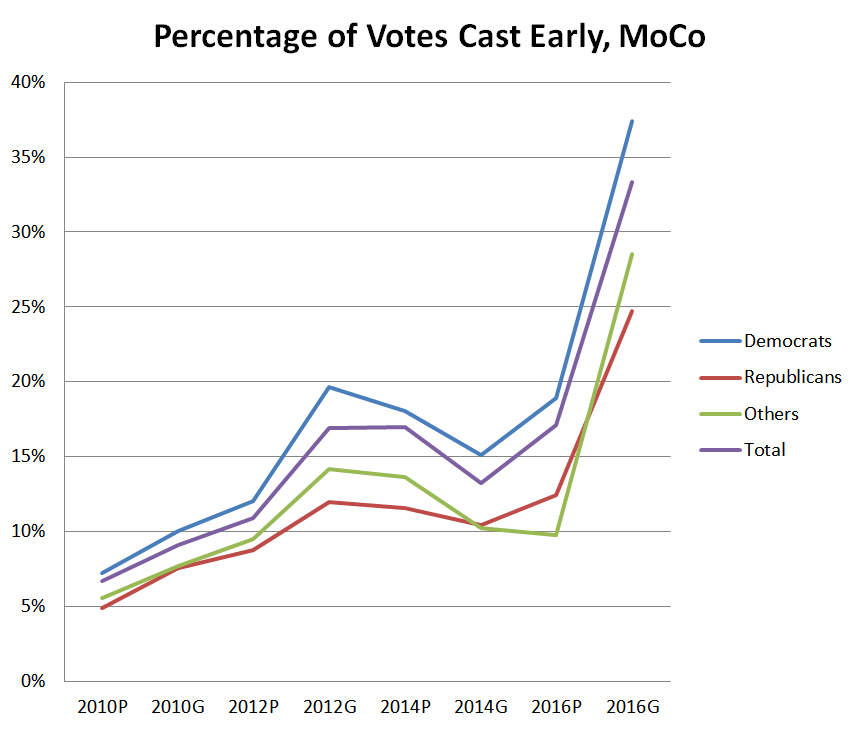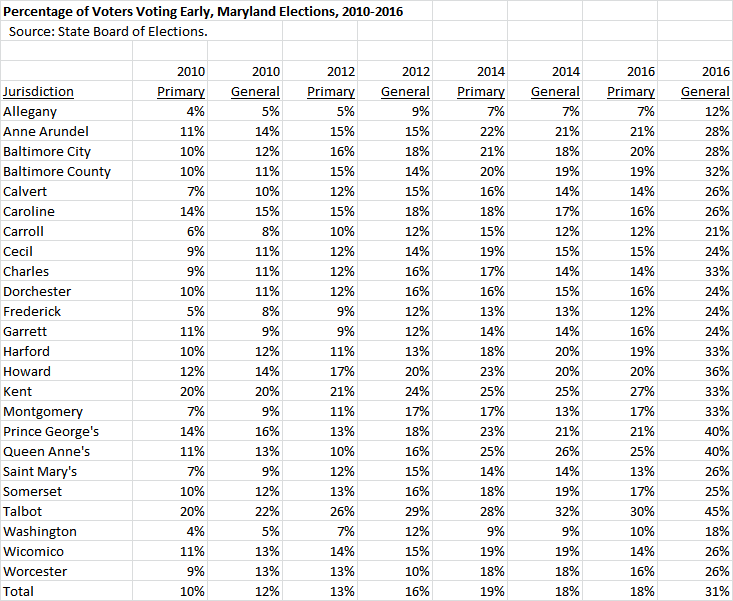By Adam Pagnucco.
Long ago, the overwhelming percentage of voting occurred on Election Day. Absentee and provisional ballots played roles mainly in tight races. So campaign activities were performed on tight, escalating schedules and reached a climax on the one day when voters headed to the booth. But in the era of early voting, it’s not so simple anymore.
Early voting in Maryland was established by a state constitutional amendment passed in 2008. It was first used in the 2010 elections. Usage of the option started slowly, with only 10% of voters voting early in the 2010 primary. But in the 2014 general and 2016 primary, 18% of voters voted early and the percentage spiked to 31% in the 2016 general. Democrats tend to vote early at higher rates than Republicans and unaffiliated voters.
Early voting has been less heavily used in MoCo than in the rest of the state but MoCo closed the gap in 2016. In that year, MoCo’s early voting percentages were very close to state averages.
There are huge variations in early voting between counties. Talbot County, on the Eastern Shore, is the early voting champ. Forty-five percent of Talbot’s voters voted early in the 2016 general election. Kent, Prince George’s and Queen Anne’s Counties also stand out. On the other side, early voting is least frequent in Western Maryland’s Allegany and Washington Counties.
What percentage of voters will vote early this time? Our hunch is that the huge spike in the 2016 general election was anomalous and related to strong feelings about the presidential candidates. If we throw those results out, the long term trend is still up. Our best guess is that between a fifth and a quarter of Democrats at the state level and in MoCo will vote early in the upcoming primary. We shall see if we are right!



